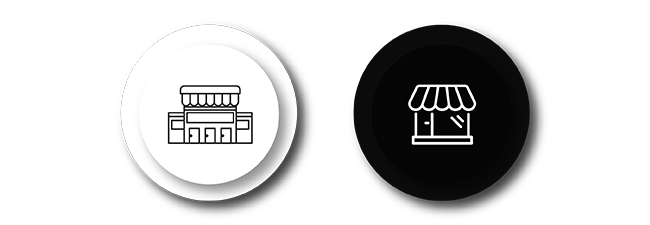Your approach to product pricing says a lot about your business. For one, it can lead your customers to form a perception around the products you stock. Simultaneously, you can use it to create or enhance your retail brand image. That’s why you need to be strategic. And, what is more, deliberate than choosing a pricing strategy? A strategy such as price skimming.
Now, we’ll admit there is much controversy around this specific pricing strategy. Many may argue that you’d be better off choosing a different method. However, there is no doubt that it is an approach that many retailers use, and it can work.
That said, just because it works well for a competitor, for example, doesn’t mean it’ll have the same positive effect for you. That’s why the question remains: is a price skimming strategy worth your time?

What is a price skimming strategy?
Before we consider whether this strategy will work for your retail brand or not, it’s worth unpacking it further.
Here is a short definition:
Price skimming is a product pricing strategy whereby you would price new products high before reducing the price over time. The point is for you to generate maximum profit in the shortest time possible. As for the price reduction, it usually occurs as direct competition for that product increases or initial demand drops.
The drop in price is also done to attract other customers who are price-sensitive, thereby increasing the longevity of the product’s lifecycle. As for the aim, besides generating maximum profit, it’s to help you recoup any investment that you’ve placed into the product before competition increases and pricing pressures kick in.
Apple is a good example here. So too is Samsung or Huawei if we were to focus specifically on smartphones. When these companies first introduce their latest phones, there is a rush to buy them. People are prepared to pay high prices so they can say that they’re first.
In reality, any innovative electronic product makes for a good example. It works just as well when dealing with luxury goods as customers already associate high prices with high quality and are therefore more likely to spend money to gain the perceived value of exclusivity. Note; a prestige pricing strategy is also worth considering.
As for the characteristics of a product that would fit such a strategy, there are a few.
For example, it would need to have an aspirational value attached to it. Also, innovation is critical as is the perception that the product is of high quality. Beyond that, if you have an early adopter willing to pay a premium price for your product, you’ll know that you can seriously consider it.

Is it worth investing in a price skimming strategy?
As we’ve noted above, a price skimming strategy allows you the opportunity to recover your investment into a product. And quickly so. That alone makes it an appealing approach.
Of course, there is the view that it is illegal - many regions deem it as such. That’s because if you use market characteristics to adjust your prices, it’s discriminatory.
However, if you focus on the characteristics of your products (listed above) when implementing or considering this strategy, it is possible to use it legitimately.
Why you should follow this strategy
There are many reasons why you should follow this strategy.
Firstly, it’s good for your margin. Considering the fact that you generate maximum profit in as short a time as possible, you can increase your cash flow.
What’s more, it's easier to start pricing your products high and then dropping your price than it is the other way around. There is a risk to this strategy, which we explain below. However, it makes sense.
Imagine introducing a product at a price and then gradually increasing the cost. That’s a surefire way to cut demand and can negatively affect customer perception. However, dropping prices can make you appear as if you’re shopper-friendly and look after their interests.
There is also the small point that you’re giving shoppers the impression that you’re products are of high value. More importantly, as pointed out above, you can develop an aspirational value to shopping at your store and buying your products.
For example, it can help you to attract customers who will pay a premium price based on their perceived value of a product you stock.
Why you shouldn’t follow this strategy
While there are many reasons why you should follow a price skimming strategy, there are just as many risks associated with it.
For example, following it means you do run the risk of high stockholding. That’s if you don’t sell these lines as quickly as you’d hoped. Of course, this problem could also be a result of you mismatching the strategy and products or even choosing products shoppers don’t want and won’t buy. In that case, you should reconsider your assortment and data.
But the risk remains.
Another reason to reconsider using this method is that of customer dissatisfaction. Once you drop the prices of a product, shoppers who have already bought it can feel cheated. They will wonder why they didn’t wait until you had reduced your price.
If they do ask themselves this question often, it’s a sign that your product is not as innovative as you’d hope. There is also the point that shoppers could think twice about shopping at your store.
The flip side of that is if you could narrow your target market. In some instances, that’s good - you do want to target the customer who will pay a higher price. However, it can lead to fewer customers, and you might not sell as much product as you expect.
Added to that is lower economies of scale because of lower volumes. Also, there is the risk of coming off as more expensive than your competitors.

Who should invest in a price skimming strategy?
By now, you will have a better idea of what to expect if you want to implement a price skimming strategy in your store.
That said, a question remains. It is this: who should invest in this strategy? After all, as much as you might have considered all the positives and negatives, you still need to match the right pricing strategy to your business.
Who should invest in this strategy?
If you are a retail business with a strong brand presence and a target market with high disposable income, this is an excellent approach to take.
Apple is a good example here as the company has a strong presence. You could say the same for any other major brand that is a leader in its field. Or, at least, among the top few brands within their respective categories.
Likewise, if you sell luxury goods. Since these are shorter in supply, it matches the high demand that you’d expect. Also, high prices allude to exclusivity, and most consumers willing to pay a high price do so because of the perception of status attached to such a purchase.
Premium retail chain stores such as Apple can implement this strategy. So too can any store that you’d find located in an affluent area.
That said, you can have one of your stores following this strategy because they are in a wealthy area. Meanwhile, you could follow a different pricing strategy for one of your other stores, which is in a less affluent area. In that case, it could stock a different range, which you’d price differently.
Who shouldn’t invest in this strategy?
When it comes to deciding whether or not to invest in this strategy, it’s not only about the size of your store. It won’t be as effective regardless of if you’re a large or small retailer. Instead, it’s about your circumstances and retail environment.
For example, if you have a lot of direct (and indirect) competition, it’s not a good idea to invest in it. That’s because your competitors can see when you’ve raised your prices. What’s more, they could then use that fact as an opportunity to come in and undercut your market share.
It’s also not a good idea if you’re a discount retailer where your primary focus is price and your assortment is limited to popular lines. It's also not worth it if you’re a wholesaler since you usually have a narrow assortment, high volumes and high stock turns with lower margins.
Conclusion
DotActiv Lite, Pro, and Enterprise are all different versions of our category management software that allows you to drive category performance. You can visit our online store here or book your free custom exploratory consultation here.


